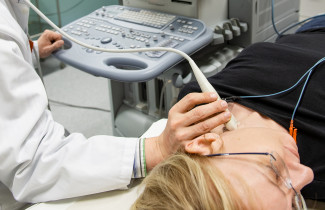The doctoral dissertation in the field of Health Sciences will be examined at the Faculty of Health Sciences at the Kuopio Campus.
What is the topic of your doctoral research?
The association between cardiovascular health metrics and the risk of cardiovascular events and all-cause mortality among the Finnish populace.
Why is it important to study the topic?
Cardiovascular disease (CVD) is among the leading causes of mortality worldwide, accounting for over 17 million deaths annually. In Finland, CVD is a major health concern accounting for approximately 36% of all deaths across ages and sex. The United States face significant challenges from CVD, thus, the American Heart Association developed a metric to tackle the burden of CVD among the US population while improving their cardiovascular health (CVH) status. This CVH metric, also called Life's Simple Seven (LS7), was based on four health behaviours (smoking, body mass index (BMI), physical activity and diet) and three health factors (blood pressure (BP), fasting blood glucose and total cholesterol levels). The application of this CVH metric among the northern European population is limited, and awareness of its potential benefits to reduce the burden of CVD and improve cardiovascular health in Finland is low. Therefore, a detailed assessment, distribution, and applicability of CVH metric and the risk of CVD among a northern European population is a major step towards reducing the associated CVD burden in the region, and globally.
What are the key findings or observations of your doctoral research?
Ideal and optimum CVH and LS7 scores were associated with lower risks of CVD outcomes and all-cause mortality among middle-aged Finnish men. The dose-response relationships revealed that achieving more ideal CVH factors reduces the risk of acute myocardial infarction (AMI), CVD mortality, sudden cardiac death (SCD), stroke and all-cause mortality in a graded manner. The CVH metrics may be a potential tool for CVD and stroke risk classification as well as monitoring and measuring progress for a healthier lifestyle.
How can the results of your doctoral research be utilised in practice?
In order to lower the risk of AMI, stroke, CVD mortality, SCD and all-cause mortality, the general population should be encouraged to target and sustain the ideal levels of physical activity, body mass index, blood pressure, blood glucose and total cholesterol levels, as defined by the American Heart Association (AHA). They should also be advised to quit smoking or to remain non-smokers, while maintaining a healthy diet. These, collectively, proffer a better way towards improving cardiovascular health than focusing on improving only one of the components of AHA's CVH metric.
What are the key research methods and materials used in your doctoral research?
A prospective population-based Kuopio Ischaemic Heart Disease (KIHD) cohort study was used. The KIHD consists of randomly selected 2682 men from eastern Finland who were between 42 and 60 years of age at baseline (1984–1989). The CVH metric was computed using seven risk factors including healthy diet score (HDS), blood pressure, physical activity, body mass index (BMI), smoking status, plasma total cholesterol, and fasting blood glucose. These seven factors are categorised into ideal, intermediate and poor.
The doctoral dissertation of Nzechukwu Michael Isiozor, MBBS, MSc (PH), entitled Cardiovascular health metrics and risk of cardiovascular events and all-cause mortality among the Finnish populace, will be examined at the University of Eastern Finland. The Opponent in the public examination will be Professor Veikko Salomaa of the National Institute for Health and Welfare (THL), and the Custos will be Professor Jari A. Laukkanen of the University of Eastern Finland.
For further information, please contact:
Nzechukwu Michael Isiozor, nzechukwu.isiozor (a) uef.fi



